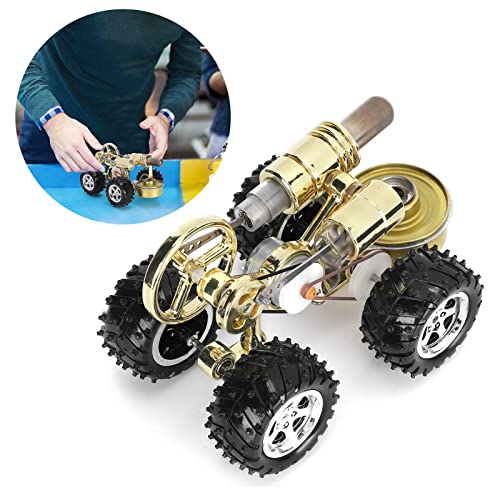As hardening steel is a heating process, it can be achieved in many ways from heating, various flames, coke hearth fires,, or "barbecues", induction heating, etc.
A front wheel stub axle forging had the bearing inner-track part of the axle induction hardened and cooled by an air blast. The induction heating raised the temperature to just the right value, and the air-quenching cooled it at the right rate. Change the induction heating current or time, or the air-quench time, and the bearing inner track would be at the wrong hardness leading to early life failures - or stub axle breakage!
A bit of "high technology" unnecessary for a Chinese model engine I think?
I should heat a Gudgeon-pin (piston-pin for the Yanky Doodle Dandies) to a dull red, quench in oil, polish to shiny metal then heat until yellow temper lines appear and just start to change to blue, then quench in water. A final polish and the pin should be adequately hardened and tempered. The change point from yellow to blue colour is related to the reflected wavelength of light as smaller crystal structures are created at the surface of the steel at particular temperatures. But not so small as to create embrittlement, yet also retain pin-core ductility.
Easy to do and hopefully you'll never find out if you got it wrong!
N.B. Gudgeon pins were used on many linkages, eg. Con-rod to cross-head to piston-rod pins - as common on Double acting pistons - which later became a position inside the piston, when the cross-head was combined with the piston as the piston skirt on single acting pistons. So folk who didn't know the correct engineering term just called them "piston pins" and the name became common parlance in American Motor Industry parlance. (The Great Henry Ford's mob?). Just odd how the Trunk - at the front of an Elephant - became a storage compartment at the rear of motor cars? (Perhaps more polite than referring to that same storage compartment for luggage as "the Rectum"? - That may conflict with the the idea of "putting the a##ehole in the driver's seat"?- I wonder at how words are mis-used and become common parlance as generation evolve the language. I struggle with Mobile phone and computer terminology too... (Media is plural of a Medium, to me. But "a Medium" is someone who "sees" things in their own mind, attributed to ghosts or spirits or whatever unknown invisible messaging service - so we call the News programme on TV "the media"... I.E. as believable as Ghosts and spirit messages?



).
K2































![MeshMagic 3D Free 3D Modeling Software [Download]](https://m.media-amazon.com/images/I/B1U+p8ewjGS._SL500_.png)






















![DreamPlan Home Design and Landscaping Software Free for Windows [PC Download]](https://m.media-amazon.com/images/I/51kvZH2dVLL._SL500_.jpg)







